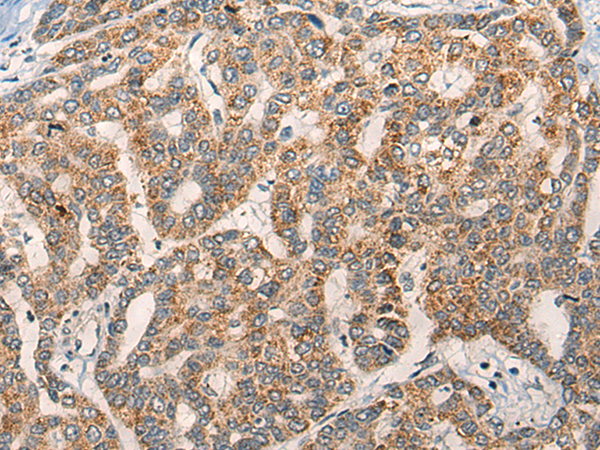
| WB | 咨询技术 | Human,Mouse,Rat |
| IF | 咨询技术 | Human,Mouse,Rat |
| IHC | 1/40-1/200 | Human,Mouse,Rat |
| ICC | 技术咨询 | Human,Mouse,Rat |
| FCM | 咨询技术 | Human,Mouse,Rat |
| Elisa | 1/5000-1/10000 | Human,Mouse,Rat |
| Aliases | NL1 |
| Host/Isotype | Rabbit IgG |
| Antibody Type | Primary antibody |
| Storage | Store at 4°C short term. Aliquot and store at -20°C long term. Avoid freeze/thaw cycles. |
| Species Reactivity | Human, Mouse, Rat |
| Immunogen | Synthetic peptide of human NLGN1 |
| Formulation | Purified antibody in PBS with 0.05% sodium azide and 50% glycerol. |
+ +
以下是3篇与NLGN1抗体相关的文献摘要简述:
1. **"Neuroligin-1 mediates presynaptic maturation through brain-derived neurotrophic factor (BDNF) signaling"**
作者:Kang H. et al.
摘要:通过NLGN1抗体阻断实验,发现NLGN1通过与BDNF-TrkB通路相互作用,调节海马神经元突触前囊泡释放,影响突触成熟和可塑性。
2. **"Altered expression of neuroligin-1 in autism spectrum disorder patients"**
作者:Chen S. et al.
摘要:利用NLGN1抗体进行脑组织免疫组化分析,发现自闭症患者前额叶皮层NLGN1蛋白表达显著降低,提示其与突触功能异常相关。
3. **"Structural basis of neuroligin-1 recognition by β-neurexin"**
作者:Araç D. et al.
摘要:通过抗体重组和冷冻电镜技术,解析了NLGN1胞外结构域与β-神经连接蛋白的结合界面,揭示了跨突触粘附分子识别的分子机制。
注:以上内容为示例性概括,具体文献需通过PubMed等数据库检索确认。
Neuroligin-1 (NLGN1) is a postsynaptic cell adhesion molecule predominantly localized at excitatory synapses in the central nervous system. It belongs to the neuroligin family, which interacts with presynaptic neurexins to form trans-synaptic bridges critical for synapse formation, maturation, and plasticity. NLGN1 plays a key role in regulating glutamatergic signaling, dendritic spine development, and long-term potentiation (LTP), making it essential for learning and memory processes. Dysregulation of NLGN1 has been implicated in neurodevelopmental and psychiatric disorders, including autism spectrum disorders (ASD) and schizophrenia.
Antibodies targeting NLGN1 are widely used in neuroscience research to investigate its expression, localization, and function. These antibodies enable techniques like immunohistochemistry, Western blotting, and immunofluorescence to visualize NLGN1 distribution in brain tissues or cultured neurons. Specific NLGN1 antibodies are crucial for distinguishing it from other neuroligin isoforms (e.g., NLGN2. NLGN3) due to high sequence homology. Researchers also utilize NLGN1 antibodies to study synaptic alterations in disease models or assess protein-protein interactions involving NLGN1. Validation of antibody specificity, often through knockout controls or epitope mapping, is critical to ensure accurate experimental outcomes. Overall, NLGN1 antibodies serve as essential tools for unraveling synaptic biology and its links to neurological disorders.
×